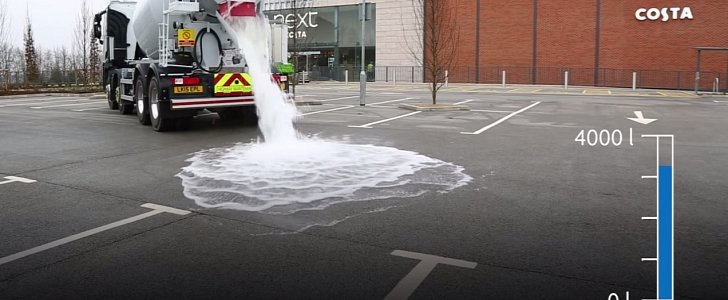Whatever the outcome of cars may be, whether they’ll all be electric or self-driving, one thing remains quite steady: you need roads. Since we’re quite far from the Medieval Ages, most of the streets out there are pretty much made out of the same “ingredients” which regularly lead to tarmac or asphalt. There’s a downside to this especially in urban areas, and it relates to flooding.
Flooding can be caused by many reasons, of course, but one of these quite common to urban areas is what they call an urban runoff. The problem is quite straightforward. Because of land development, roads, parking lots and sidewalks are being built. Regularly, these surfaces are made from asphalt or/and concrete. Therefore, they don’t allow water to percolate through the soil.
Instead, the water table lowers down and eventually flooding happens, since the amount of water that remains on the surface is greater. Sure, in a perfect world, cities throughout the world would go back to more sustainable values and find a balance between tarmac and nature, but that may take a while.
There’s another way around this problem that is growing exponentially with the climate change. Extreme weather events cause issues like flooding, which is why this new water-drinking tarmac may come in handy.Topmix Permeable has an average permeability rate of 600 litres per square meter (158 gallons per 10 square feet) in one minute.
Designed by British company Lafarge, the Topmix Permeable Tarmac could play a fundamental role in the majority of Sustainable Urban Drainage Systems plans. The fast draining concrete pavement solution rapidly directs excess water away from streets, parking surfaces, driveways and walkways.
Apparently, unlike conventional concrete, it has a high void content of between 20-35%. This allows surface water to drain through into the sub-strata and dissipate naturally, reducing the risk of surface water flooding and watercourse contamination.
Not only does it help with tackle flash flooding in urban areas, but it also helps reduce heating of the street in hot weather. When water that was previously stored in the system evaporates, it creates a cooling effect reducing surface temperatures.
We’re not exactly sure if this new tarmac does what it says it does, but we listed the presentation video below for you to decide it yourself.
Instead, the water table lowers down and eventually flooding happens, since the amount of water that remains on the surface is greater. Sure, in a perfect world, cities throughout the world would go back to more sustainable values and find a balance between tarmac and nature, but that may take a while.
There’s another way around this problem that is growing exponentially with the climate change. Extreme weather events cause issues like flooding, which is why this new water-drinking tarmac may come in handy.Topmix Permeable has an average permeability rate of 600 litres per square meter (158 gallons per 10 square feet) in one minute.
Designed by British company Lafarge, the Topmix Permeable Tarmac could play a fundamental role in the majority of Sustainable Urban Drainage Systems plans. The fast draining concrete pavement solution rapidly directs excess water away from streets, parking surfaces, driveways and walkways.
Apparently, unlike conventional concrete, it has a high void content of between 20-35%. This allows surface water to drain through into the sub-strata and dissipate naturally, reducing the risk of surface water flooding and watercourse contamination.
Not only does it help with tackle flash flooding in urban areas, but it also helps reduce heating of the street in hot weather. When water that was previously stored in the system evaporates, it creates a cooling effect reducing surface temperatures.
We’re not exactly sure if this new tarmac does what it says it does, but we listed the presentation video below for you to decide it yourself.

